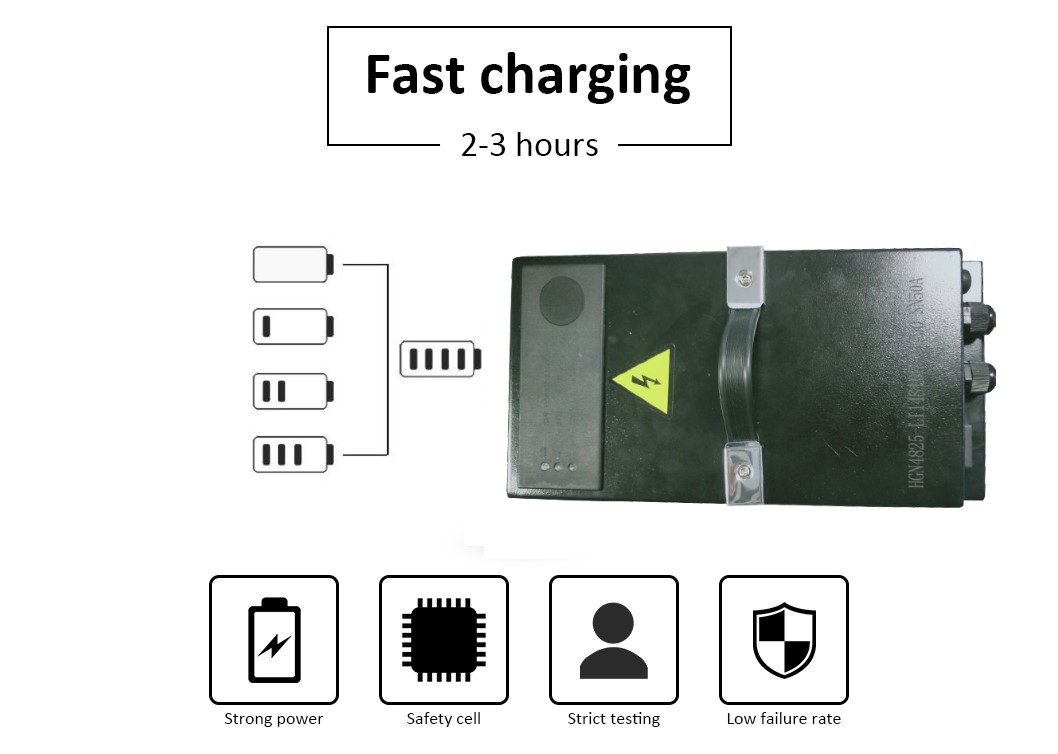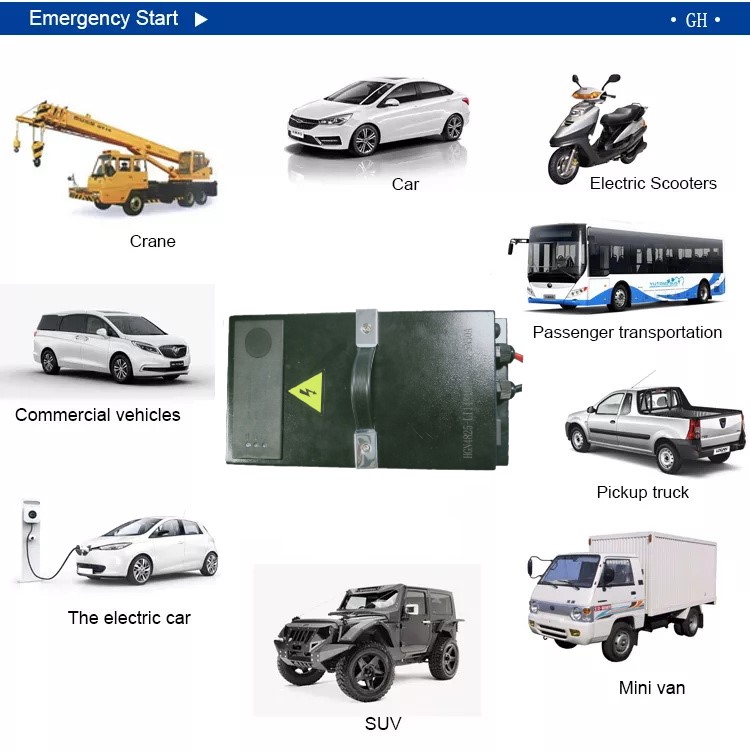Consulting phone:
135-3037-2041
(Mr.Wang)
Overview
AGV supercapacitor module is to connect several supercapacitors in series and cooperate with voltage equalization and discharge voltage stabilization system. The birth of super capacitor module makes up for the defects of energy storage devices such as lead-acid batteries; The utility model solves the problem that the use efficiency of the lead-acid battery is greatly reduced under the outdoor cold conditions; Moreover, the super capacitor module not only has all the characteristics of the super capacitor monomer, but also has the function of monitoring the working state, which can better realize maintenance free and easy maintenance.
Basic parameters:
project | standard | ||
size | 335mm*180mm*180mm | ||
weight | 15kg | ||
Rated Capacity | 22Ah | ||
Rated voltage | 48V | ||
voltage range | Charge cut-off voltage: 58.8V | ||
Discharge cut-off voltage: 35V | |||
Current range | Charging current 50A | ||
Discharge current 50A | |||
BMS model | F702-20100-2X | ||
communication | 485 | ||
Communication wiring | DB9 Female 2-A 3-B | ||
Internal resistance (DCIR) | ≤170mΩ | ||
Current terminal | GRIDPOWER MPC50A600V Grey | ||
Cycle life (room temperature) | 3000th order (≥80%, 100% DOD) @ 20 ± 5 ℃ | ||
Discharge temperature | , -30℃~60℃ | ||
charging temperature | , -30℃~60℃ |
Product electrical properties
project | testing method | standard |
Rated Capacity | After standard charging, leave the battery open circuit at 25℃±5℃ for 1~4h, | 0.5C≥22Ah |
High temperature capacity | 1. After standard charging, open the battery pack and place it in a high temperature box and set the temperature. | The discharge capacity at different temperatures satisfies: |
low temperature capacity | 1. After standard charging, place the open circuit in the low temperature box and set the temperature. | The discharge capacity at different temperatures satisfies: |
Normal temperature cycle life | 25℃±5℃ ambient temperature | ≥3000 |

Precautions
Please observe the following safety regulations when using batteries. Misuse of the battery can cause the battery to overheat, swell, and catch fire and cause serious injury.
ØDo not put the battery in fire or heat the battery
Ø Do not reverse the battery so that the polarity of the battery is reversed
ØDo not use metal objects ( such as wires, etc. ) or conductive materials ( such as carbon rods, etc. ) to connect the positive and negative poles of the battery
Ø Do not carry or place the battery with necklaces, hairpins or other metal objects
Ø Do not use hard objects ( such as nails, etc. ) to puncture the battery, do not use a hammer to hit the battery, do not step on the battery, do not collide strongly
or shock battery
Ø Do not put the battery in water or other solvents, and do not place the battery in a particularly humid environment for a long time

Do not disassemble or modify the battery. The battery has a protective device that, if damaged, could cause the battery to heat up, swell, or catch fire during use.
Do not place batteries near fires, stoves, or other hot objects. Do not expose the battery to strong sunlight.
The use of the battery by children should be carried out under the supervision of an adult to ensure that the battery is used correctly according to the user manual.
When the battery is scrapped, it needs to be sent to a special place for recycling.
When using, charging, or placing the battery, if the battery emits an odor, becomes extremely hot, swells, discolors, or deforms
If any abnormal phenomenon occurs, please stop using it immediately. When something like this happens, you should contact your local dealer or Yukun Technology.
Do not put batteries in microwave ovens, high pressure containers or induction cookers.
In case the liquid from the battery leaks into the eyes, please do not rub the eyes, rinse with clean water and go to the hospital immediately to avoid eye damage
eye damage.
Charge
recharging current
The charging current shall not exceed the charging current specified in this standard. Charging with a current higher than the recommended value may cause
Charge and discharge performance, mechanical performance and safety performance issues, and may cause heat generation or leakage.
Charging voltage
The charging voltage shall not exceed the rated voltage specified in this standard. 58.8V is the limit of charging voltage, the design of the charger should meet the
this condition. When the cell voltage is higher than the rated voltage value, it may cause problems in the charging and discharging performance, mechanical performance and safety performance of the cell.
May cause heat generation or leakage.
charging temperature /
The battery must -30 ℃ ~60 be charged within the ambient temperature range of
Reverse charging prohibited /
Correctly connect the positive and negative poles of the battery, and reverse charging is strictly prohibited. If the positive and negative poles of the battery are reversed, the battery will not be able to be charged. At the same time, the opposite
Charging will reduce the charging and discharging performance and safety of the battery, and will cause heat generation and leakage.
discharge
Discharge current /
The discharge current must not exceed the discharge current specified in this standard. Discharging with a large current will cause the capacity of the cell to decrease sharply and cause overheating.
Discharge temperature /
The battery must be within the ambient temperature range of -30℃~60 ℃ discharged
overdischarge /
It should be noted that during long periods of non-use of the battery, it may be in some overdischarged state with other self-discharge characteristics. To prevent discharge from occurring , the battery should be charged regularly. Overdischarge will lead to the loss of cell performance and battery function.